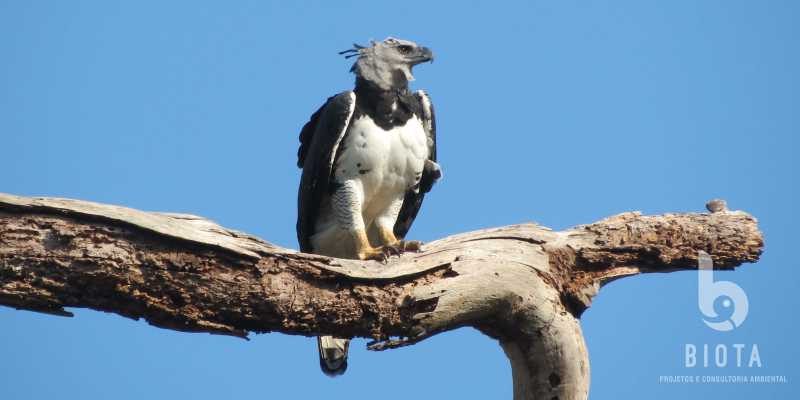In the Tapajos-Xingu interfluve, one of the largest birds of prey, the Harpy Eagle, is under intense anthropogenic pressure due to historical and recent reductions in forest cover. We studied prey availability and use by Harpy Eagle on six breeding territories on the low- and mid-Xingu River, between 2013 and 2015. We evaluated food resource availability using the environmental-surveys database from two methods: terrestrial surveys (RAPELD method) and fauna rescue/flushing before vegetation suppression for the Belo Monte Hydroelectric Complex construction. Harpy Eagle diet was identified by prey remains sampled around six nest trees. Eighteen species of mammals, birds and reptiles comprised the prey items. Most prey species were sloths, primates and porcupines, which have arboreal habits and are found in forested areas, but two species, hoatzin and iguana, are usually associated with riverine habitats. The proportion of prey from each species predated on the nest best studied was different from estimated availability (χ2 = 54.23; df = 16; p < 0.001), however there was a positive correlation (rs = 0.7; p < 0.01) between prey species consumed and abundance available, where the predation was more on species more abundant. Continuous monitoring of the Harpy Eagle diet at these nests could evidence changes in the assemblage of prey species available for Harpy Eagles, due to changes in the seasonal flood pulse of the Xingu River to be caused by the operation of the hydroelectric dam, and changes in habitat features by forest reduction around breeding territories. We believe that it is important to consider the protection of remnants of forested areas in the landscape matrix surrounding the breeding territories to maintain the food resource availability and allow all pairs to successfully reproduce.

